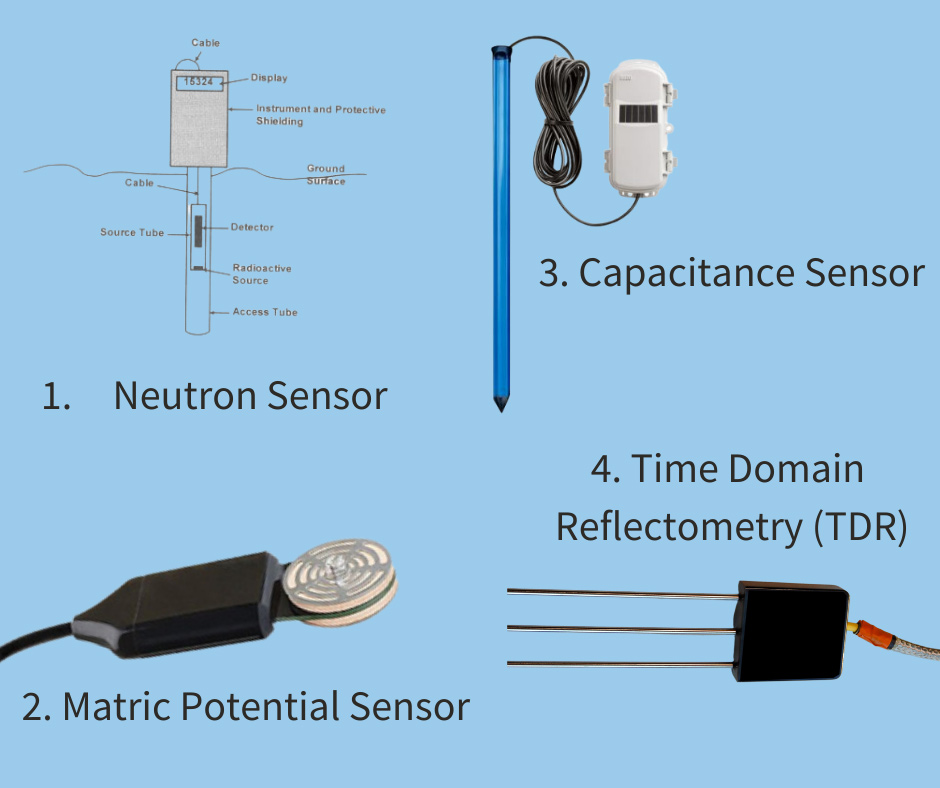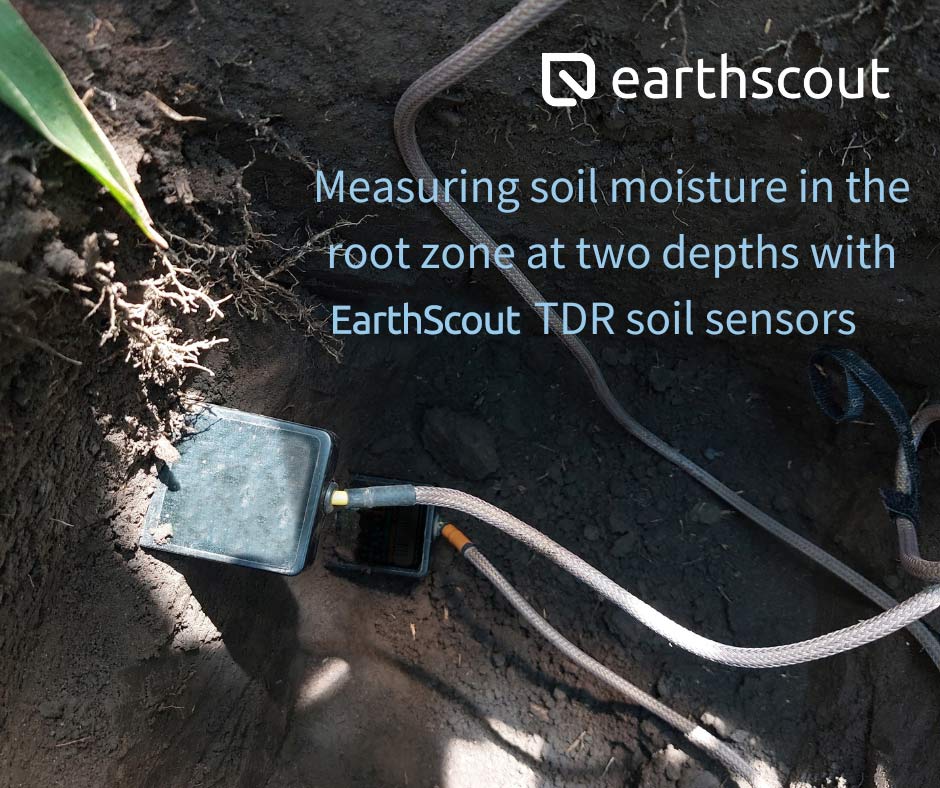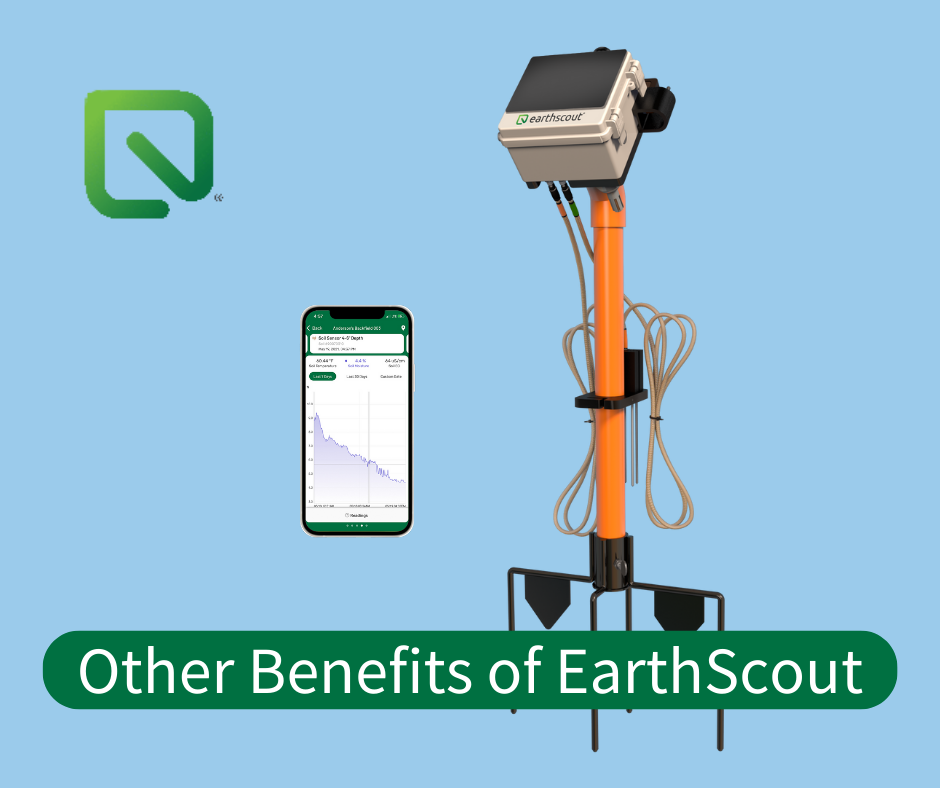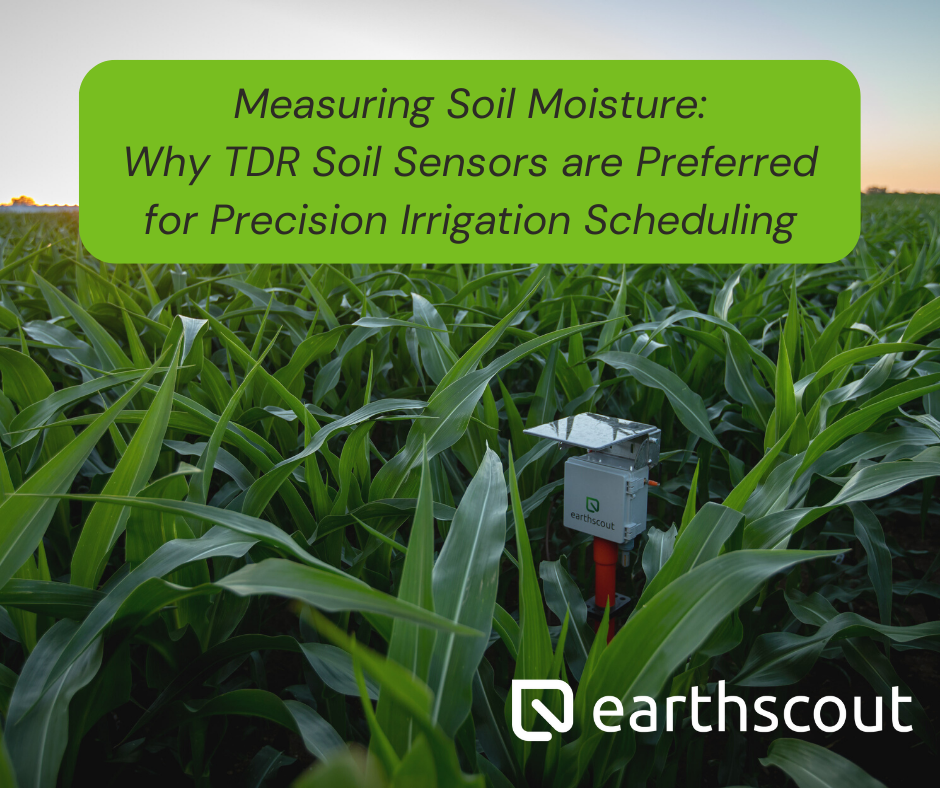Precision agriculture and precision irrigation practices have been on the rise in recent years due to environmental and economic factors.
IoT soil moisture sensors help take the “guess work” out of irrigation scheduling – saving growers time and money.
Over-irrigation not only wastes water, but it also increases the potential for nitrogen leaching below the root zone (where costly nitrogen applications become unavailable to the plant) and into precious groundwater resources which can cause unsafe drinking water conditions. Also, running irrigation systems requires high energy costs, so ideally you only apply the water that is needed and no more. Over-irrigation also reduces soil aeration which causes plant stress and reduction in yield.
Under-irrigation reduces yield and increases plant stress, harming overall plant growth and development.
Historically, soil water sensing has had barriers including unreliable hardware, limited access of timely data, equipment too laborious to maintain and install, data interference, and data unreliability.
EarthScout provides growers with research quality, plug-and-play sensors. In this blog we will review the different types of soil moisture sensors and the pros and cons of each, as well as why EarthScout believes that Time Domain Reflectometry (TDR) is the best option for precision and reliability.
There are 4 general types of sensors that are being utilized on-farm for agronomic monitoring: Neutron sensing, Matric Potential sensing, Capacitance sensing, and Time Domain sensing.

1. Neutron Sensors (Neutron probe)
Neutron sensors are highly accurate and have been used in high level research for decades. Neutron sensors measure soil water content from a spherical volume of soil. Now that more moisture sensing technology has emerged, the disadvantages of the neutron probe have outweighed the advantages. They are quite labor intensive, require safety training due to the radioactive material present, and relative costliness (prices start at $10k for one sensor).
2. Matric Potential Sensors
Also known as resistance sensors or tensiometers, matric potential sensors provide a measurement of the potential energy needed for water to be removed from the soil matrix. Another way to think about matric potential is the energy with which the water is held in the soil and the availability of the water to the plant. This sensor can be useful for providing a “plant view” of the soil moisture conditions but are not as accurate or able to provide quick response measurements for real-time monitoring.
3. Capacitance Sensors (ADR & FDR)
Amplitude Domain Reflectometry (ADR) and Frequency Domain Reflectometry (FDR), while adequate in many conditions, this type of sensor is a relatively young technology (especially ADR). As such, they are not as widely used in research and may not be well suited to growers who intend to use their soil moisture data as a primary or high-level source of information for irrigation scheduling and other agronomic decisions.
Capacitance sensors have a single, large probe housing and as soils fluctuate through a wet/dry cycle, the soil may pull away from the sensing device, or water itself can create channels along the housing (preferential flow) and disrupt the sensing process. This is common in soils that are more clayey, soils that experience regular freezing, or regular intense drying events and can cause data accuracy issues and overestimation of soil moisture content.
ADR and FDR sensors are greatly affected by variation of water content, bulk density, and bulk EC of soils. Conventional fertilizers, most types of organic fertilizers, manures, and many irrigation water sources effect the bulk EC of soils and soilless mixtures and can interfere with capacitance sensor data accuracy. Without proper adjustment and calibration, the moisture content is easily over-estimated in soils with high EC and soil variability.
4. Time Domain Reflectometry (TDR) Sensors
The most common sensor used for university and high-level research is the TDR sensor.
In early years, TDR sensors were cumbersome and relatively expensive (but not as expensive as the then “gold standard” for research, the Neutron Probe), while also being as quick to respond to changing conditions and providing a high level of accuracy. As a result of their extensive use, TDR sensors have been greatly refined and now directly compare to the Neutron Probes in accuracy while their price has become significantly more affordable.
These research grade sensors becoming more affordable have made them well suited for on-farm needs.
TDRs are not affected by the saltiness of the soil. Though they do also provide an EC measurement for the benefit of growers, their ability to provide an accurate and precise measurement of the % soil moisture is not affected by the degree of saltiness in the rootzone or growing media because TDR accuracy relies on the ability to measure time in the billionths and trillionths of a second.

Why TDR?
- Non-destructive soil measurements: EarthScout’s 3 prong TDR soil sensor is inserted horizontally in undisturbed root zone, adjacent to a hole dug at your desired depth
- Easy to install for long-term or short-term use. Easy to uninstall for storage or when using the EarthScout to monitor multiple crops or locations.
- No calibration needed for almost every cropped soil type. The math has been done and the probes have been rigorously tested and are regularly used a wide variety of soil types and crop conditions.
- Can be used in high organic matter, high salt and soil or soilless rootzone with many larger pore spaces.
- Low power needs. Less draw on the EarthScout battery allows us to provide more sensors on every EarthScout and leaves growers with a worry-free, hands-off system.
EarthScout’s soil moisture sensors are matching Neutron Moderation in accuracy of measuring % soil moisture.
Due to the refinements to the design and advanced research, the original critiques that are often related to TDR and dielectric probes in general have been eliminated. No compaction issues, no preferential flow problems, and no need to disturb the area of the soil that will be monitored to properly install the devices.
The result is that EarthScout TDR Soil Sensors can provide stable permittivity measurements with an accuracy of ±1% of full scale (relative permittivity from 1 to 80) even over the range of 0 to 4000 µS/cm bulk (in-soil) electrical conductivity.

+ Each sensor type offered by EarthScout is plug and play: no calibration required.
+ EarthScout is a certified B corporation, and this ensures that your data is safe and secure today and into the future. All EarthScout growers own their data, and we will never sell your data.
+ EarthScout provides Grow Coaches (trained agronomists) to its growers to help you use and understand your data and the use of the EarthScout APPs.
+ EarthScout uses TDR (Time Domain Reflectometry) soil sensors. We use TDR sensors because they have a refined, proven, and patented design with accuracy and precision that has been relied upon for decades in many fields of university research.
+ EarthScout precision field sensors qualify for precision irrigation cost-share programs funded by the USDA and NRCS.
For more information about how EarthScout can help save you time and money, visit EarthScout.com, or contact an EarthScout Agronomist today at 877-443-7632.
Theresa Bayrer (Lead Agronomist for EarthScout) is a plant physiologist with over 20 years of experience in professional agronomics.
